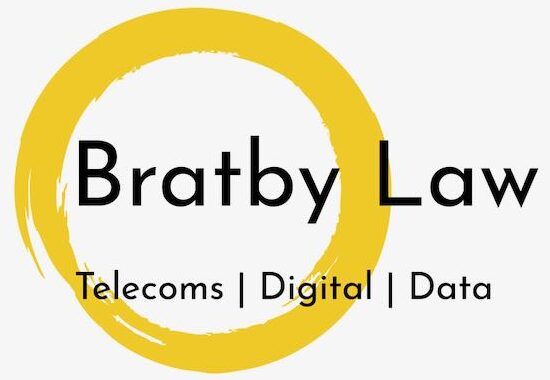The key source of international treaty obligations relating to telecoms market liberalisation and entry is the post-Uruguay round of WTO negotiations which resulted in commitments relating to basic telecoms services and the general obligations contained in the General Agreement on Trade in Services (GATS) and its telecommunications annex. Whilst telecoms is part of the post-Doha round, in common with other areas, little progress has been made.
As part of the negotiations, the UK and US jointly sponsored a telecoms reference paper, setting out a reference set of commitments relating to liberalisation of the telecoms market. Whilst individual countries are of course free to modify this in their individual commitments in practice it has served as a benchmark. As it is relatively short, I reproduce the text below:
TELECOMMUNICATIONS SERVICES: REFERENCE PAPER24 April 1996
Negotiating group on basic telecommunicationsThe following are definitions and principles on the regulatory framework for the basic telecommunications services.
Definitions
Users mean service consumers and service suppliers.
Essential facilities mean facilities of a public telecommunications transport network or service that
(a) are exclusively or predominantly provided by a single or limited number of suppliers; and
(b) cannot feasibly be economically or technically substituted in order to provide a service.
A major supplier is a supplier which has the ability to materially affect the terms of participation (having regard to price and supply) in the relevant market for basic telecommunications services as a result of:
(a) control over essential facilities; or
(b) use of its position in the market.
1. Competitive safeguards
1.1 Prevention of anti-competitive practices in telecommunications
Appropriate measures shall be maintained for the purpose of preventing suppliers who, alone or together, are a major supplier from engaging in or continuing anti-competitive practices.
1.2 Safeguards
The anti-competitive practices referred to above shall include in particular:
(a) engaging in anti-competitive cross-subsidization;
(b) using information obtained from competitors with anti-competitive results; and
(c) not making available to other services suppliers on a timely basis technical information about essential facilities and commercially relevant information which are necessary for them to provide services.
2. Interconnection
2.1 This section applies to linking with suppliers providing public telecommunications transport networks or services in order to allow the users of one supplier to communicate with users of another supplier and to access services provided by another supplier, where specific commitments are undertaken.
2.2 Interconnection to be ensured
Interconnection with a major supplier will be ensured at any technically feasible point in the network. Such interconnection is provided.
(a) under non-discriminatory terms, conditions (including technical standards and specifications) and rates and of a quality no less favourable than that provided for its own like services or for like services of non-affiliated service suppliers or for its subsidiaries or other affiliates;
(b) in a timely fashion, on terms, conditions (including technical standards and specifications) and cost-oriented rates that are transparent, reasonable, having regard to economic feasibility, and sufficiently unbundled so that the supplier need not pay for network components or facilities that it does not require for the service to be provided; and
(c) upon request, at points in addition to the network termination points offered to the majority of users, subject to charges that reflect the cost of construction of necessary additional facilities.
2.3 Public availability of the procedures for interconnection negotiations
The procedures applicable for interconnection to a major supplier will be made publicly available.
2.4 Transparency of interconnection arrangements
It is ensured that a major supplier will make publicly available either its interconnection agreements or a reference interconnection offer.
2.5 Interconnection: dispute settlement
A service supplier requesting interconnection with a major supplier will have recourse, either:
(a) at any time or
b) after a reasonable period of time which has been made publicly known
to an independent domestic body, which may be a regulatory body as referred to in paragraph 5 below, to resolve disputes regarding appropriate terms, conditions and rates for interconnection within a reasonable period of time, to the extent that these have not been established previously.
3. Universal service
Any Member has the right to define the kind of universal service obligation it wishes to maintain. Such obligations will not be regarded as anti-competitive per se, provided they are administered in a transparent, non-discriminatory and competitively neutral manner and are not more burdensome than necessary for the kind of universal service defined by the Member.
4. Public availability of licensing criteria
Where a licence is required, the following will be made publicly available:
(a) all the licensing criteria and the period of time normally required to reach a decision concerning an application for a licence and
(b) the terms and conditions of individual licences.
The reasons for the denial of a licence will be made known to the applicant upon request.5. Independent regulators
The regulatory body is separate from, and not accountable to, any supplier of basic telecommunications services. The decisions of and the procedures used by regulators shall be impartial with respect to all market participants.
6. Allocation and use of scarce resources
Any procedures for the allocation and use of scarce resources, including frequencies, numbers and rights of way, will be carried out in an objective, timely, transparent and non-discriminatory manner. The current state of allocated frequency bands will be made publicly available, but detailed identification of frequencies allocated for specific government uses is not required.
Last updated: April 2020.
